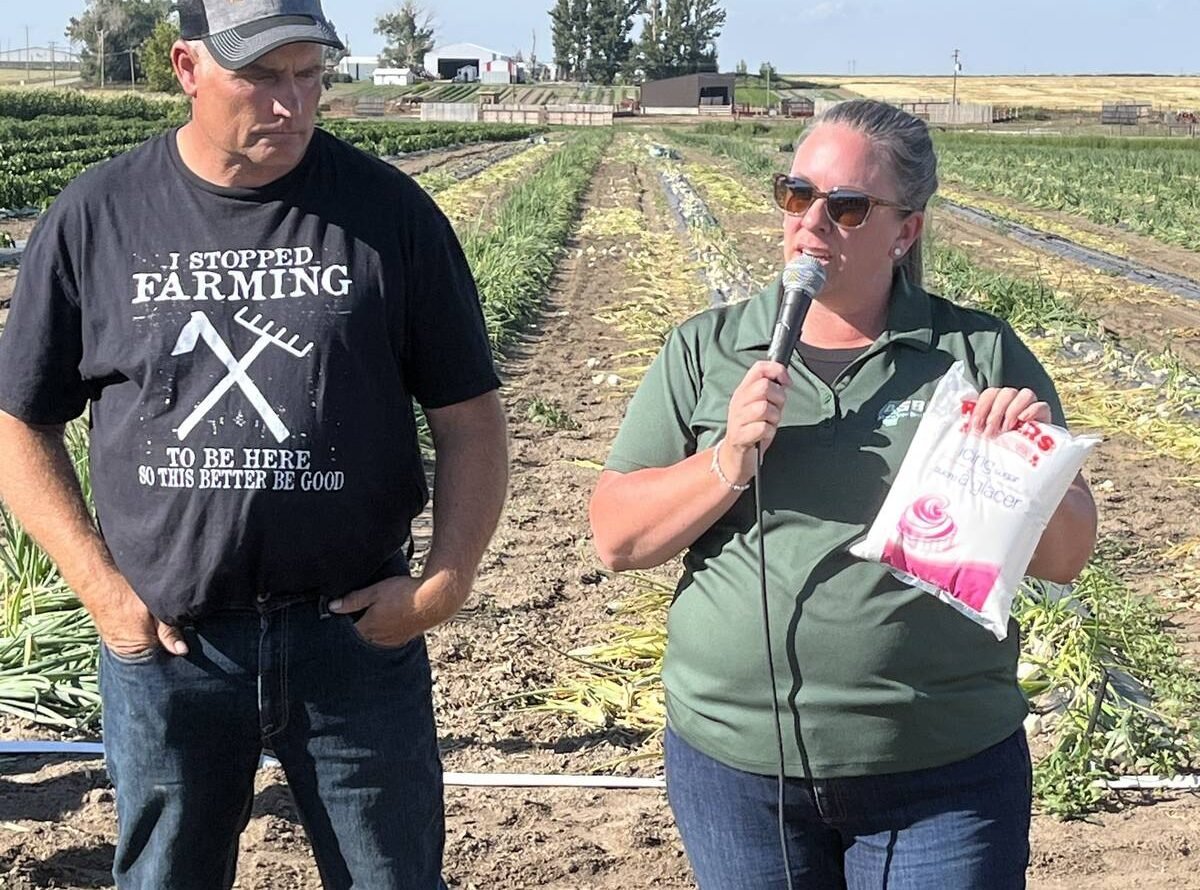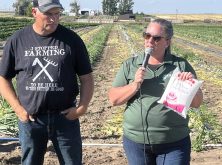LINDELL BEACH, B.C. – U.S. government scientists are evaluating the storage properties of promising new potato varieties that offer significant potential for growers.
Their studies show that two new cultivars, Dakota Crisp and Dakota Diamond, can survive nine months of storage.
Potato storage is a major concern for growers.
Damage, disease and sprouting are serious issues, and quality control is paramount to avoiding significant financial loss.
Ten to 15 percent of the harvested crop can be lost in storage, costing U.S. farmers $2.1 billion. Losses can reach as high as 30 percent in a bad year.
Read Also

Alberta’s beets a sweet domestic segment in Canada’s sugar supply
The sugar beet industry is showcased during a Farm to Table tour, as Taber features the last remaining sugar beet processing plant in all of Canada.
Ninety percent of the potato harvest is placed into medium to long-term storage, primarily to service the processing industry that produces chips, french fries and dehydrated potato flakes.
Maintaining quality is the biggest problem. Processors have strict guidelines and specifications, and the whole crop can be rejected if a grower’s product fails inspection.
“Unlike most farmers whose worries are over at the end of harvest, the potato farmer’s harvest is just half the battle because now he has a living organism in storage,” said physiologist Jeffrey Suttle, research leader with the U.S. Department of Agriculture’s Northern Crop Science Laboratory in Fargo, North Dakota.
“He has hundreds of thousands of pounds of potatoes that can go bad in a matter of literally two weeks if they aren’t monitored or they go into storage improperly. A disease can march through the storage facility in just two weeks and reduce a crop to a pile of mush. Storage management is critical.”
Suttle and his team have been working with the Northern Plains Potato Growers Association and public potato breeding programs to evaluate storage properties of new varieties and conduct genetic research to find more cost effective, nonchemical solutions to the problem of early sprouting.
They have identified the internal mechanisms that signal sprouts to grow and are isolating the responsible genes.
“Sprouting is a developmental process,” Suttle said.
“In plants, it is controlled by internal signals, which are hormones. We identified three major players in dormancy control. We looked at the biochemistry and how these hormones are metabolized. We have tried to understand what the biochemical processes are to control their levels, why and how this is occurring. Then we looked for the genes that encode the enzymes that catalyze these biochemical steps. That’s where we are right now.”
Suttle’s research looks at the entire process of dormancy from the abscisic acid hormones that initiate and maintain dormancy to the class of hormones called cytokinins involved with dormancy release.
Once researchers know the specific genetic markers for long-or short-term dormancy, they can provide that information to potato breeders.
Potatoes are dormant when harvested and will not sprout.
However, dormancy ends and sprouting begins after one to three months, depending on the cultivar.
Airflow, humidity and especially temperature are critical factors during the storage period, and many growers use chemical applications to delay sprouting.
Producers store potatoes by piling them carefully and leaving them to cure at an ambient temperature with a high airflow for about two weeks. Piles are maintained at a certain height to avoid bruising.
The storage system is shut down once the curing period is over. The ventilation system is adjusted and the cool-down process is started to lower the temperature to 10 C.
“If the temperature is chilled down so it’s cold enough, it can prevent sprouting,” Suttle said.
However, cool temperatures also trigger an accumulation of sugar, which is unacceptable for processing.
Suttle said dropping a potato with high sugar content into hot oil creates a chemical response, called the Maillard reaction, between free amino acids and reducing sugars such as glucose and fructose. It instantly causes chips to become dark brown or black.
Consumers who find a dark chip in a bag often assume it has been fried too long, but it is because that particular potato had a high level of reducing sugars.
Bringing a mature, quality crop into storage is tricky, and growers pay close attention to soil and tuber temperatures, especially in Canada’s shorter and highly variable growing season.
As a result, the development of new potato varieties with improved storage qualities is welcome news.
“Dakota Crisp and Dakota Gold are products of straightforward crossing,” Suttle said.
“The original crosses may have been made 10 to 15 years ago. They’ve been under evaluation ever since. They have to go through a whole sequence of agronomic and disease screens. Then they are submitted to our program for storage evaluation. Once they make it through all that, then they go through the panel for release.”














